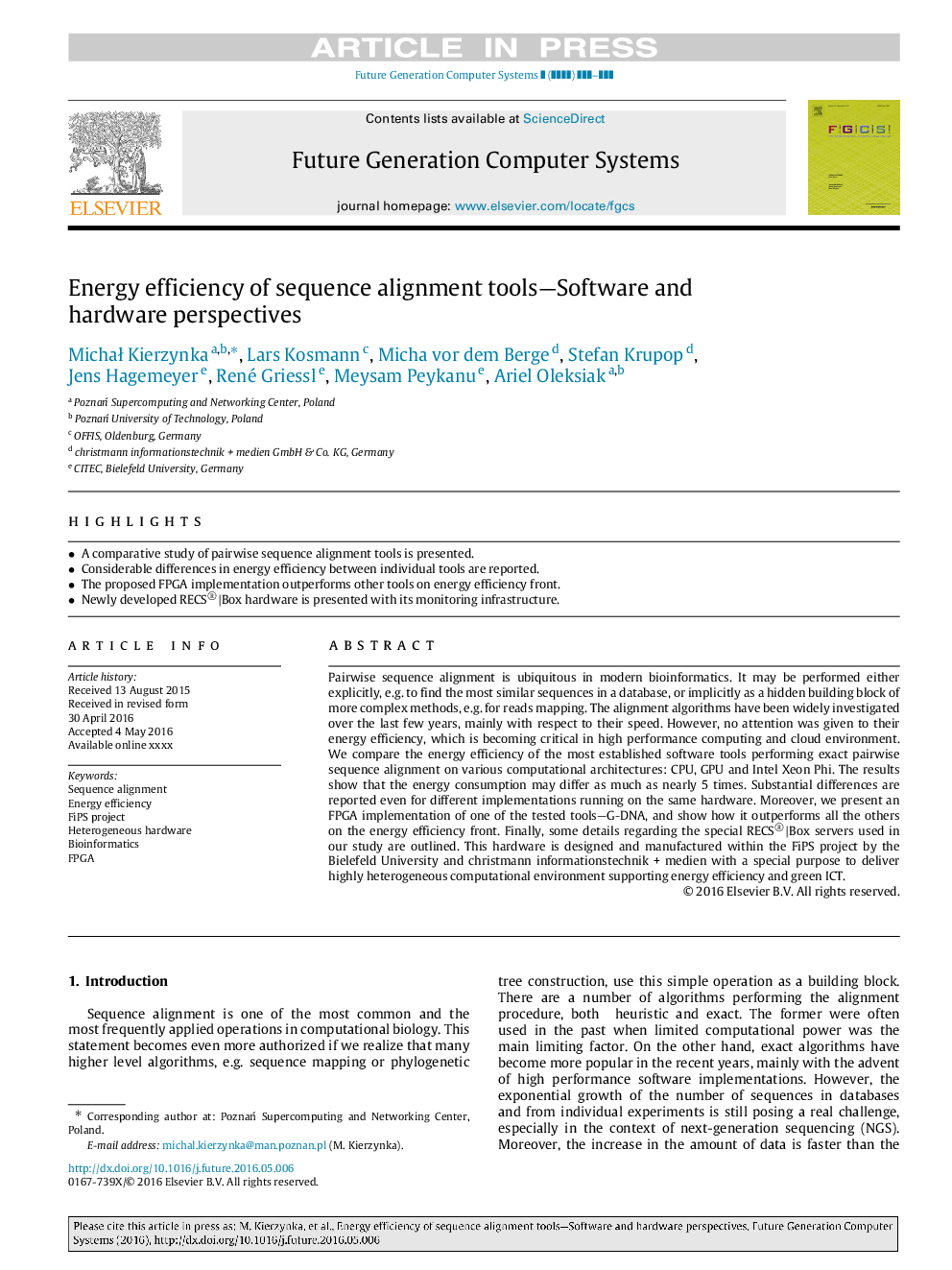| Article ID | Journal | Published Year | Pages | File Type |
|---|---|---|---|---|
| 4950564 | Future Generation Computer Systems | 2017 | 11 Pages |
Abstract
Pairwise sequence alignment is ubiquitous in modern bioinformatics. It may be performed either explicitly, e.g. to find the most similar sequences in a database, or implicitly as a hidden building block of more complex methods, e.g. for reads mapping. The alignment algorithms have been widely investigated over the last few years, mainly with respect to their speed. However, no attention was given to their energy efficiency, which is becoming critical in high performance computing and cloud environment. We compare the energy efficiency of the most established software tools performing exact pairwise sequence alignment on various computational architectures: CPU, GPU and Intel Xeon Phi. The results show that the energy consumption may differ as much as nearly 5 times. Substantial differences are reported even for different implementations running on the same hardware. Moreover, we present an FPGA implementation of one of the tested tools-G-DNA, and show how it outperforms all the others on the energy efficiency front. Finally, some details regarding the special RECS®|Box servers used in our study are outlined. This hardware is designed and manufactured within the FiPS project by the Bielefeld University and christmann informationstechnik + medien with a special purpose to deliver highly heterogeneous computational environment supporting energy efficiency and green ICT.
Related Topics
Physical Sciences and Engineering
Computer Science
Computational Theory and Mathematics
Authors
MichaÅ Kierzynka, Lars Kosmann, Micha vor dem Berge, Stefan Krupop, Jens Hagemeyer, René Griessl, Meysam Peykanu, Ariel Oleksiak,
